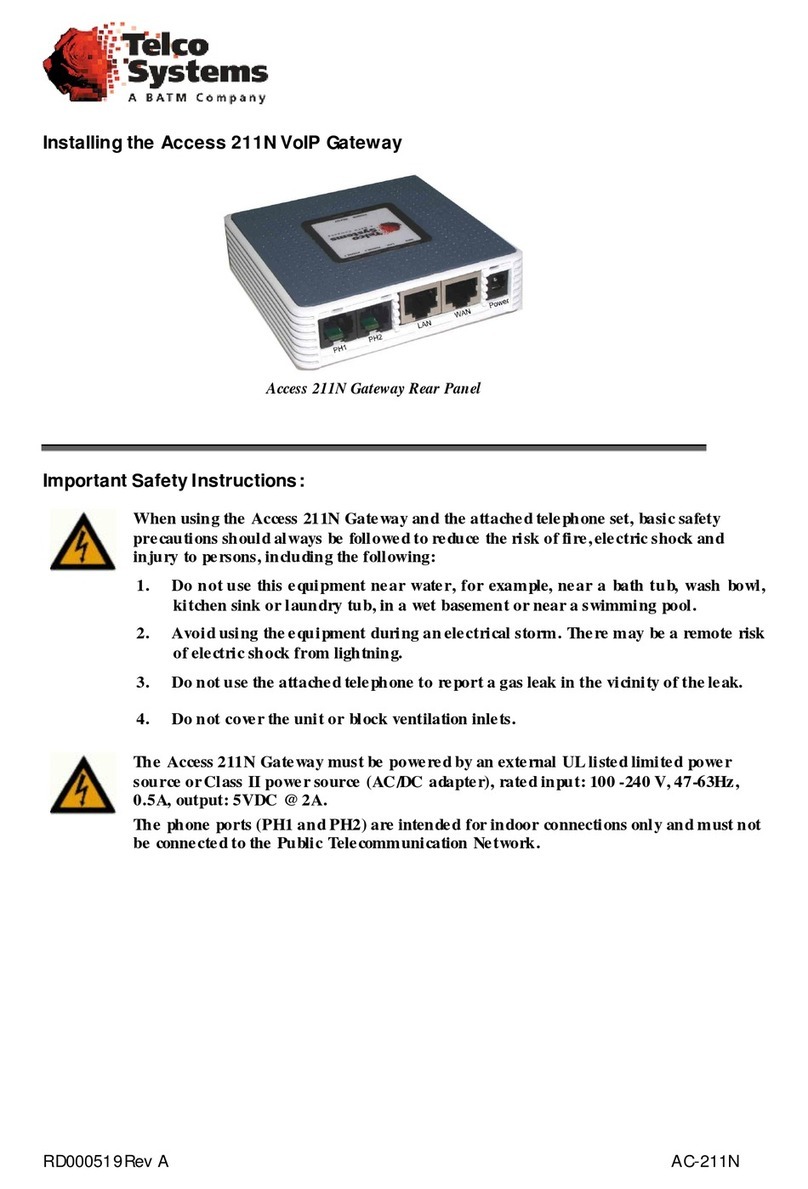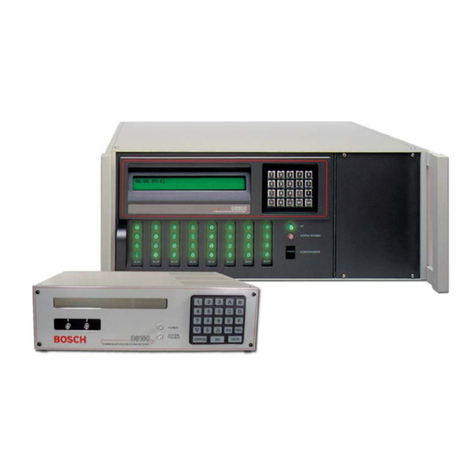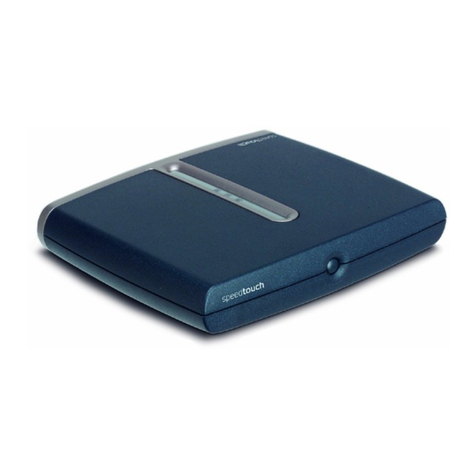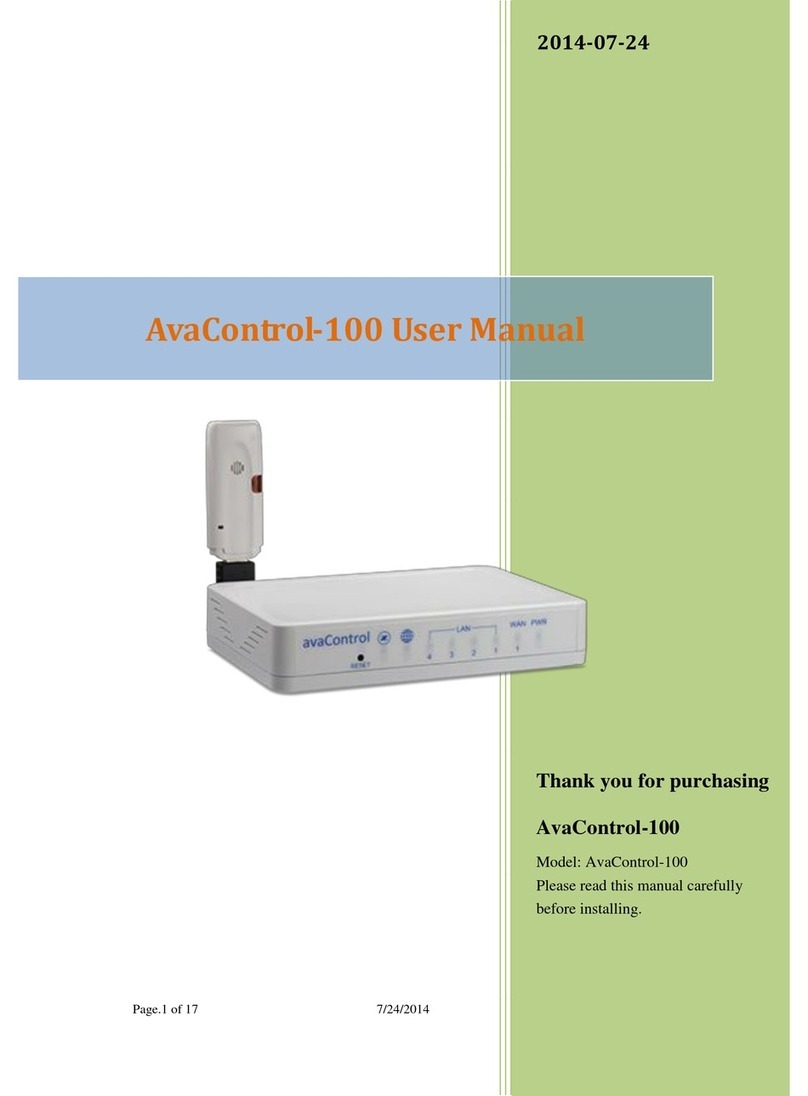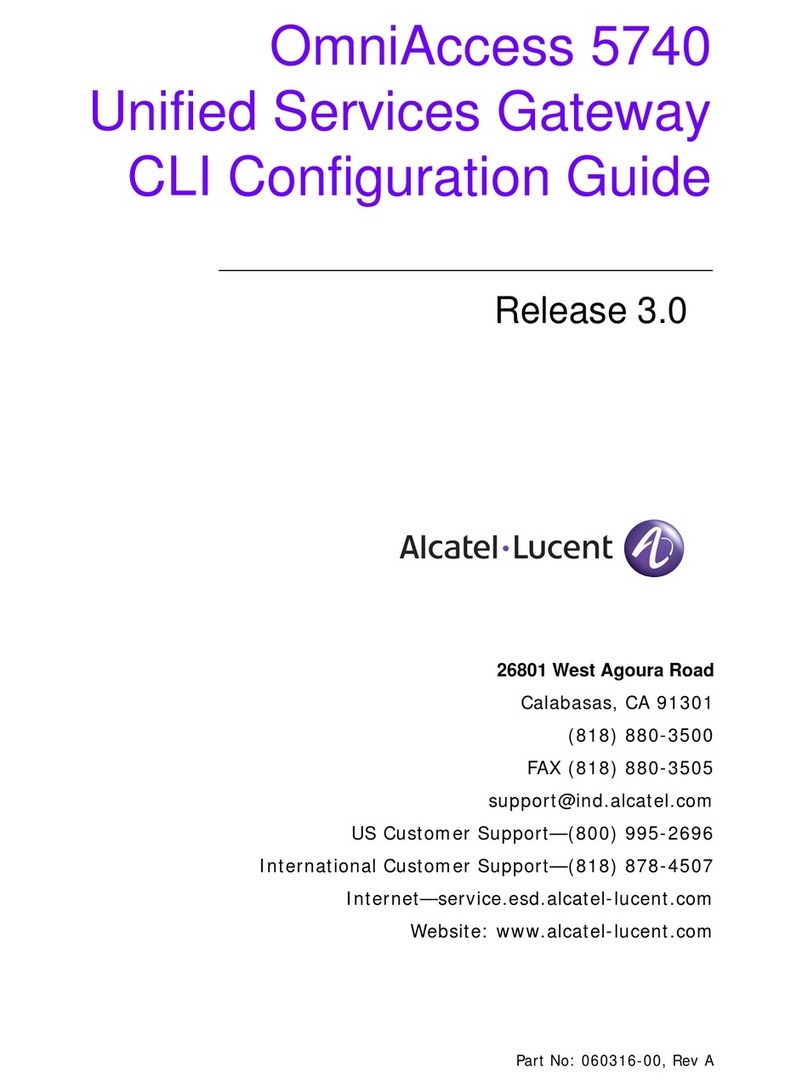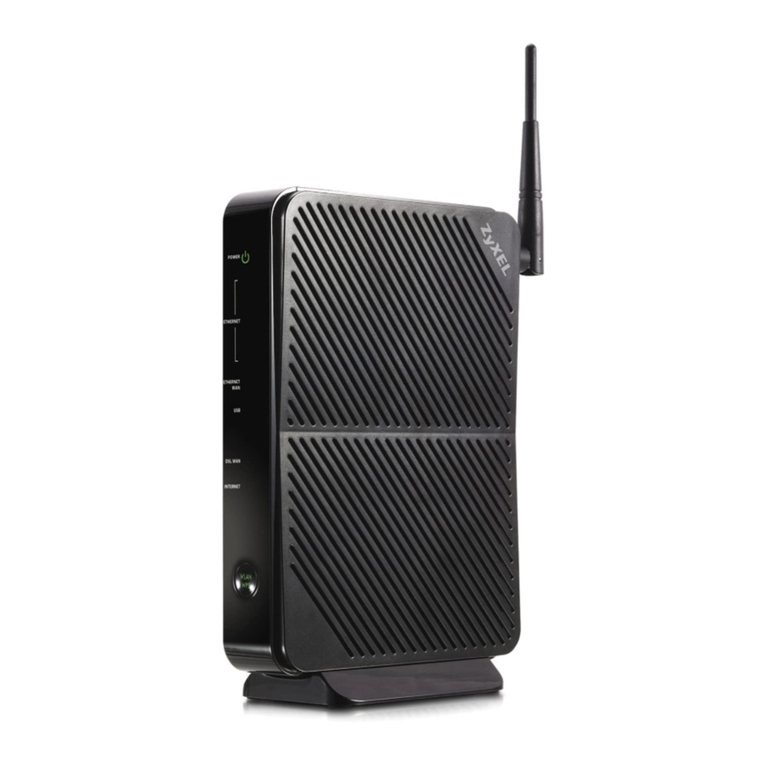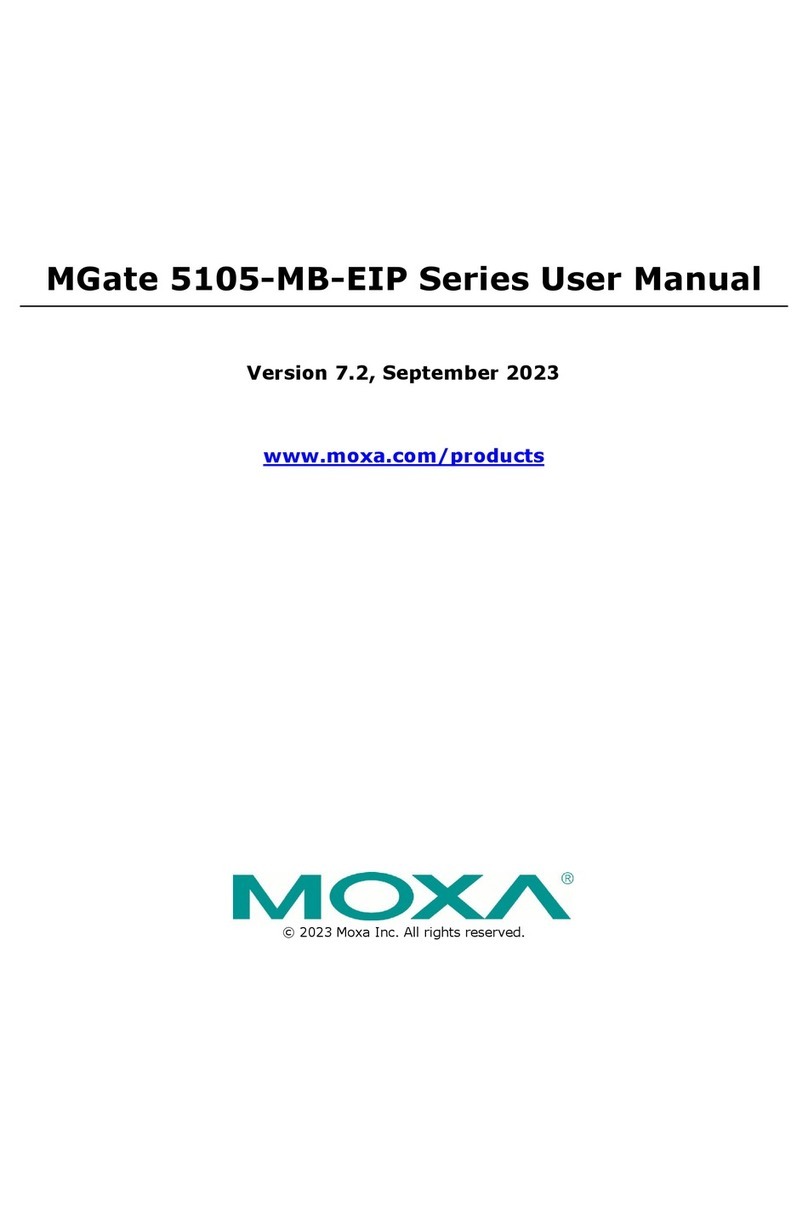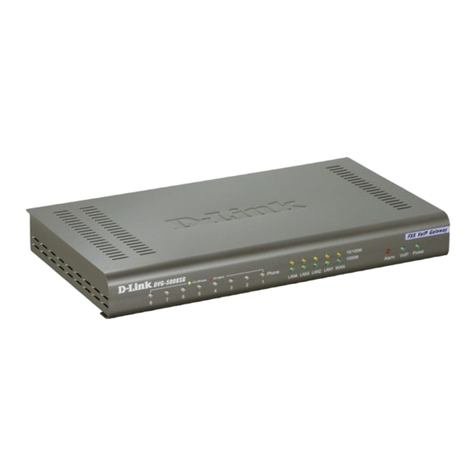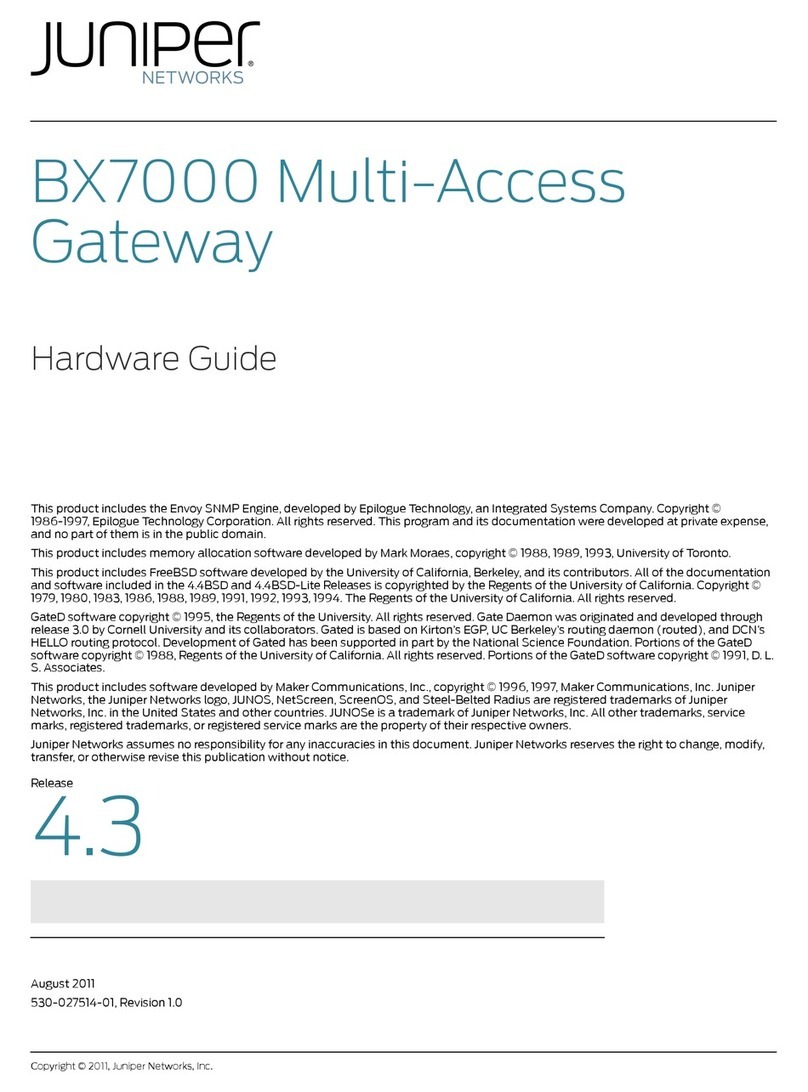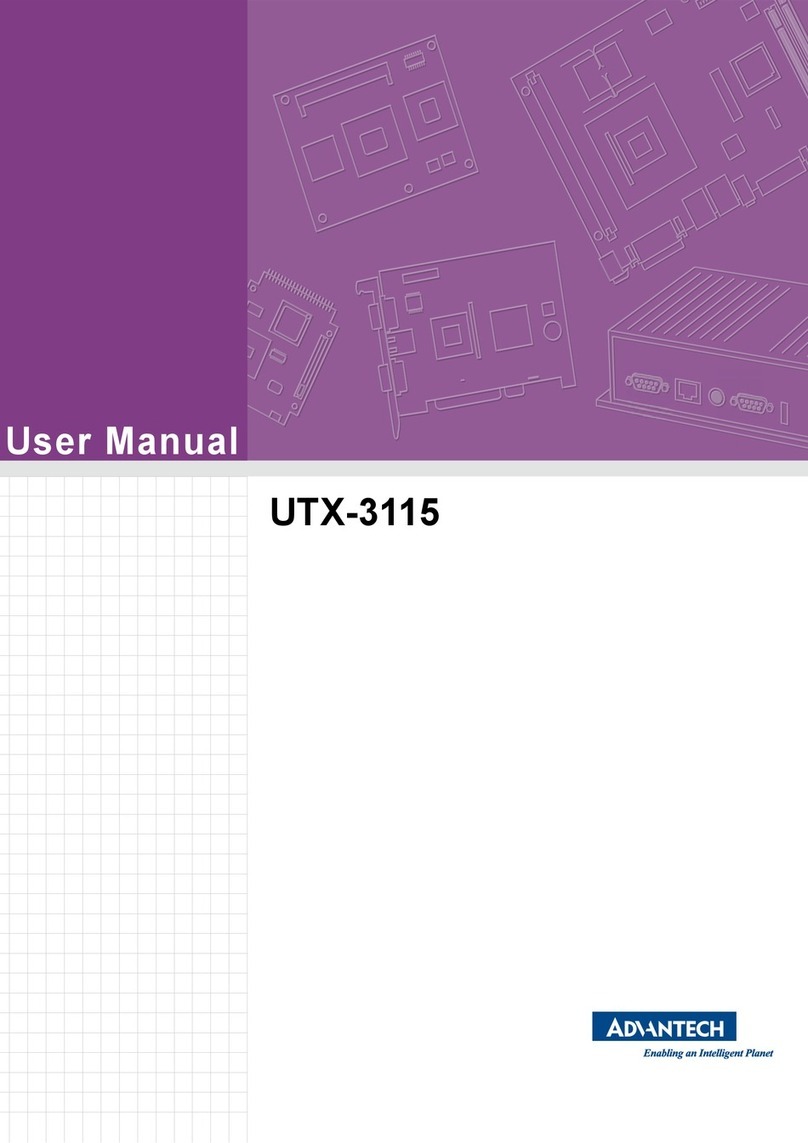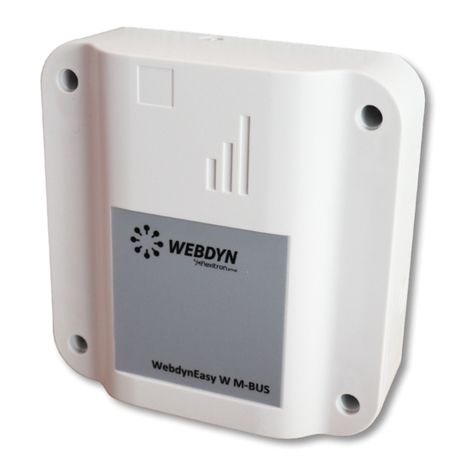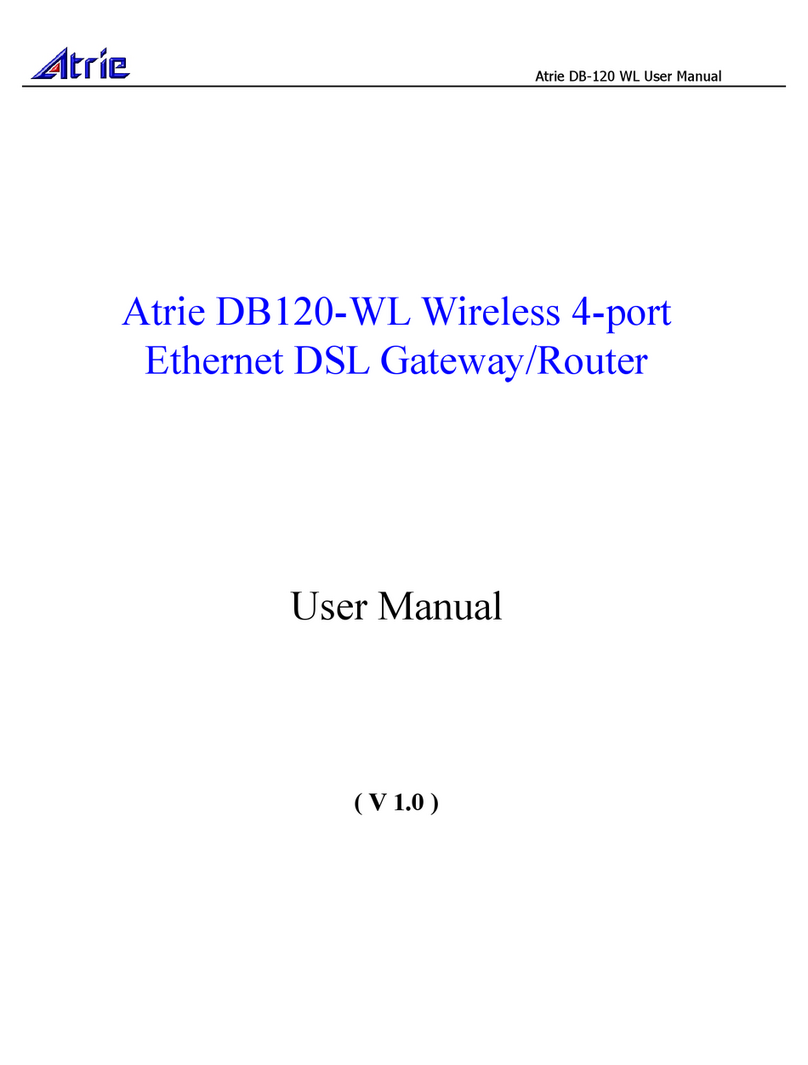Telco AC - 232 - TX User manual

Rev H
EDGEGATE / ACCESS
VOIP Gateway
AC-232-TX / GW-232-SFP
GW-282 / GW-282S / AC-282
GW-482S / GW-483S / GW-483D
H.323, MGCP, SIP
USER GUIDE

Rev H
Revision History
Revision Date Description
C January 2004 Adapted for Version 4.12
D December 2005 Adapted for Version 4.57
E May 2006 Added GW-232. Adapted for Version 5.5
F June 2007 Added GW-483S. Adapted for Version 5.8
G May 2009 Added GW-483D. Adapted for Version 5.10
H December 2009 Adapted for Version 5.11

Rev H
The information in this document is subject to change without notice and describes only the
product defined in the introduction of this document. This document is intended for the use of
customers of Telco Systems only for the purposes of the agreement under which the document is
submitted, and no part of it may be reproduced or transmitted in any form or means without the
prior written permission of Telco Systems. The document is intended for use by professional
and properly trained personnel, and the customer assumes full responsibility when using it. Telco
Systems welcomes customer comments as part of the process of continuous development and
improvement of the documentation.
If the Release Notes that are shipped with the device contain information that conflicts with the
information in the user guide or supplements it, the customer should follow the Release Notes.
The information or statements given in this document concerning the suitability, capacity, or
performance of the relevant hardware or software products are for general informational
purposes only and are not considered binding. Only those statements and/or representations
defined in the agreement executed between Telco Systems and the customer shall bind and
obligate Telco Systems. Telco Systems however has made all reasonable efforts to ensure that
the instructions contained in this document are adequate and free of material errors and
omissions. Telco Systems will, if necessary, explain issues which may not be covered by the
document.
Telco Systems’ sole and exclusive liability for any errors in the document is limited to the
documentary correction of errors. TELCO SYSTEMS IS NOT AND SHALL NOT BE
RESPONSIBLE IN ANY EVENT FOR ERRORS IN THIS DOCUMENT OR FOR ANY
DAMAGES OR LOSS OF WHATSOEVER KIND, WHETHER DIRECT, INCIDENTAL,
OR CONSEQUENTIAL (INCLUDING MONETARY LOSSES), that might arise from the
use of this document or the information in it.
This document and the product it describes are the property of Telco Systems, which is the
owner of all intellectual property rights therein, and are protected by copyright according to the
applicable laws.
Telco Systems logo is a registered trademark of Telco Systems, a BATM Company. BiNOS®,
BiNOSCenter®, T-Marc®, T5 Compact™, T5C-XG™, T-Metro®, EdgeLink®, EdgeGate®,
Access60®, AccessIP™, AccessMPLS™, AccessTDM™, AccessEthernet™, NetBeacon®,
Metrobility®, and OutBurst® are trademarks of Telco Systems.
Other product and company names mentioned in this document reserve their copyrights,
trademarks, and registrations; they are mentioned for identification purposes only.
Copyright © Telco Systems 2009. All rights reserved.


Rev H
5 of 244
Contacting Technical Support
You can access the most current Telco Systems documentation on the following
site: http://support.telco.com/.
Access to most of the Telco Systems documentation is password protected. To
obtain a password, contact the Telco Systems support center.
1.1 Technical Support
Telco Systems provides technical assistance for customers and partners. Users can
obtain technical assistance from any of our support centers. Contact information is
provided below:
Web Access: http://www.telco.com
Email: suppor[email protected]
BATM Advanced Communications—Main Support Center in Israel
Tel: +972-4-993-5630
Fax: +972-4-993-7926
Telco Systems, A BATM Company—for the Americas
Tel: 1-800-227-0937 (U.S.), 1-781-255-2120 (Outside U.S.)
Fax: 1-781-255-2122
Telco Systems, A BATM Company—for Northern Europe
Tel: +49-241-463-5490
Fax: +49-241-463-5491
Telco Systems, A BATM Company—for Southern Europe (in France)
Tel: +33-15-671-2773
Fax: +33-14-377-1780
Telco Systems, A BATM Company—for Asia Pacific (in Singapore)
Tel: +65-6-725-9901
Fax: +65-6-725-9889
Telco Systems, A BATM Company—for Asia Pacific (in Japan)
Tel: +81-3-5215-5709
Fax: +81-3-5215-5704

Rev H
6 of 244
Contents
1.1 TECHNICAL SUPPORT..................................................................................................................5
2OVERVIEW................................................................................................................................17
2.1 EDGEGATE VOIP GATEWAY 232/282/282S/482S/483S/483D PRODUCT OVERVIEW...............18
2.1.1 Features..........................................................................................................................21
2.2 LASER SAFETY..........................................................................................................................23
2.3 HOW TO GET HELP....................................................................................................................23
3PRE-INSTALLATION REQUIREMENTS.............................................................................25
3.1 SUPPORTING EQUIPMENT REQUIREMENTS................................................................................25
3.2 TELEPHONES AND ACCESSORIES...............................................................................................25
4INSTALLATION........................................................................................................................27
4.1 INSTALLING THE EDGEGATE.....................................................................................................27
4.2 LINK/ACTIVITY LEDS...............................................................................................................30
4.3 STATUS LEDS...........................................................................................................................30
4.4 SPECIFICATIONS........................................................................................................................31
4.5 INSTALLING THE VOIP GATEWAY GW-482S, GW-282S, GW-483S AND GW-483D...............31
4.6 POWER MONITORING ................................................................................................................32
5THEORY OF OPERATION......................................................................................................33
3.1 DIAL PLAN FOR SIP AND H.323................................................................................................33
5.1.1 Default Dial Plan............................................................................................................33
5.1.2 Dial Plan Syntax.............................................................................................................33
5.1.3 Dial Plan Examples........................................................................................................34
5.2 UNDERSTANDING DHCP ..........................................................................................................35
5.2.1 When Should Clients Use DHCP....................................................................................37
5.3 UNDERSTANDING NAT AND NAPT..........................................................................................37
5.4 UNDERSTANDING NTP .............................................................................................................37
5.4.1 Daylight Saving Time (Summer Time)............................................................................38
5.5 UNDERSTANDING SYSLOG ........................................................................................................38
5.5.1 Remote Logging..............................................................................................................39
DNS RESOLVER ...................................................................................................................39
5.7 IP FRAGMENTATION .................................................................................................................40
6INITIAL SETUP.........................................................................................................................42
6.1 KEYPAD CONFIGURATION (ENABLED ONLY ON 232 GATEWAY PRODUCTS) .............................43
6.1.1 Keypad Configuration for MGCP...................................................................................43
7USING THE VOIP GATEWAY UNIT.....................................................................................45
7.1 FIRST CALL...............................................................................................................................45
7.2 PLACING CALLS........................................................................................................................45
7.3 ADDING ADDITIONAL UNITS.....................................................................................................45
7.4 ADVANCED CALLING FEATURES FOR SIP.................................................................................45
7.4.1 Call Waiting....................................................................................................................46
7.4.2 Conference Call..............................................................................................................46
7.4.3 Forward a Call...............................................................................................................46
7.4.4 Attended Transfer Call ...................................................................................................46
7.4.5 Blind Transfer Call.........................................................................................................46
7.4.6 Hold................................................................................................................................46
7.4.7 Conditional Call Forwarding.........................................................................................47
7.4.8 Do Not Disturb (DND) ...................................................................................................47
7.4.9 Redialing to Last Received Caller ..................................................................................47

Rev H
7 of 244
7.4.10 Block Last Received Caller........................................................................................47
7.4.11 Auto Redial ................................................................................................................47
7.4.12 Block Sending CID per Call ......................................................................................47
7.4.13 Anonymous Caller Rejection (ACR) ..........................................................................47
7.4.14 Support for Pulse Metering per Telephone Line........................................................47
7.4.15 SIP Line Problem Tone Indicator..............................................................................47
7.5 ADVANCED CALLING FEATURES FOR H.323.............................................................................48
7.5.1 Call Waiting....................................................................................................................48
7.5.2 Conference Call..............................................................................................................48
7.5.3 Forward a Call...............................................................................................................48
7.5.4 Transfer Call ..................................................................................................................48
7.5.5 Hold................................................................................................................................48
7.6 ADVANCED CALLING FEATURES FOR MGCP............................................................................49
8UPGRADING THE GATEWAY FIRMWARE AND DOWNLOADING
CONFIGURATION FILES.................................................................................................................51
8.1 DOWNLOADING CODE VERSIONS MANUALLY USING TELNET ..................................................52
8.2 DOWNLOADING CODE VERSIONS OVER THE WEB VIA THE TFTP SERVER................................53
8.3 DOWNLOADING CODE VERSIONS OVER THE WEB VIA THE HTTP SERVER ...............................56
8.4 DHCP AUTOMATIC CONFIGURATION .......................................................................................60
8.4.1 Setting DHCP Automatic Configuration via the Web.....................................................60
8.4.2 Setting DHCP Automatic Configuration via Telnet........................................................61
8.5 FIXED (PROVISIONED)HTTP OR TFTP AUTOMATIC CONFIGURATION.....................................62
8.5.1 Setting the TFTP/HTTP Server “Root” Configuration File via the Web .......................63
8.5.2 Setting the TFTP Server “Root” Configuration File via Telnet.....................................63
8.6 CREATING AND ENCRYPTING CONFIGURATION FILES...............................................................64
9CONFIGURING THE VOIP GATEWAY VIA TELNET OR CLI CONSOLE..................65
9.1 STARTING A TELNET SESSION...................................................................................................65
9.2 ACCESSING THE CLI .................................................................................................................65
10 CLI COMMAND MODES.........................................................................................................69
10.1 COMMAND MODES...............................................................................................................69
10.1.1 Enable Mode..............................................................................................................69
10.1.2 Commands Mode .......................................................................................................69
10.1.3 Report Mode ..............................................................................................................69
10.1.4 Statistics Mode...........................................................................................................70
10.1.5 Download Mode.........................................................................................................70
10.1.6 Configuration Modes.................................................................................................71
10.2 GENERAL COMMANDS .........................................................................................................73
10.3 MAIN MODE CLI COMMANDS..............................................................................................73
10.4 CONFIG MODE CLI COMMANDS ..........................................................................................73
10.5 REPORT MODE CLI COMMANDS..........................................................................................75
10.6 USING THE CLI COMMANDS ................................................................................................75
10.7 CLI COMMAND TREE...........................................................................................................76
11 CONFIGURING THE VOIP GATEWAY VIA THE WEB...................................................83
11.1 ASSIGNING AN IP ADDRESS TO THE VOIP GATEWAY USING WEB CONFIGURATION ............83
11.1.1 Setting the VoIP Gateway to be a DHCP Client........................................................87
11.1.2 Using VoIP Gateway with a Fixed Address...............................................................87
11.2 VOIP PROTOCOL CONFIGURATION.......................................................................................87
11.3 AUTOCONFIGURATION .........................................................................................................87
11.4 VLAN CONFIGURATION ......................................................................................................89
11.4.1 Using VLANs on the VoIP Gateway ..........................................................................90
11.4.2 VLAN Tagging on the VoIP Gateway ........................................................................91
11.4.3 VLAN Configuration Procedure on the VoIP Gateway.............................................91
11.5 VOICE AND MANAGEMENT SERVICES CONFIGURATION.......................................................93
11.6 IGMP CONFIGURATION .......................................................................................................94
11.7 SNMP CONFIGURATION.......................................................................................................96
12 CONFIGURING SECURITY VIA THE WEB........................................................................99

Rev H
8 of 244
12.1 DEFAULT SECURITY CONFIGURATION..................................................................................99
12.2 SETTING THE PASSWORD......................................................................................................99
12.3 CONFIGURING ADVANCED SECURITY ................................................................................100
12.4 SETTING A PASSWORD FOR THE CLI ..................................................................................102
12.5 ENABLING/DISABLING CONFIGURATION VIA TELNET ........................................................103
12.6 USING ACCESS PAGE TO ENABLE USER MODE ..................................................................103
12.7 INSTALLING AN ENCRYPTION KEY.....................................................................................105
12.8 INSTALLING A GENERAL CONFIGURATION FILE ENCRYPTION KEY....................................106
13 MISCELLANEOUS CONFIGURATION VIA THE WEB..................................................109
13.1 DEFAULT MISCELLANEOUS CONFIGURATION ....................................................................109
13.2 CLOCK LOCALIZATION.......................................................................................................111
13.3 LOCAL SETTINGS (CALLER ID AND RING FORMAT)...........................................................113
13.4 SYSLOG SERVER CONFIGURATION .....................................................................................114
13.5 SENDING DEVICE INFORMATION TO THE SYSLOG SERVER .................................................115
13.6 PROTOCOL PORTS CONFIGURATION ...................................................................................115
13.7 SIP ADVANCED CALLING FEATURES AND KEY SEQUENCE CONFIGURATION.....................117
13.8 RING TONES CONFIGURATION............................................................................................121
13.8.1 SIP Distinctive Rings and Call Waiting Tones ........................................................122
13.8.2 Ring Names and Distinctive Rings Cadences ..........................................................122
13.8.3 Call Waiting Tone Cadence Patterns.......................................................................124
13.8.4 Call Progress Tones.................................................................................................125
13.8.5 Rings and Tones detailed Format Description ........................................................127
13.9 FIBER OPTIC CONFIGURATION ...........................................................................................128
13.10 COMPLETING THE VOIP GATEWAY CONFIGURATION ........................................................129
14 PROTOCOL H.323 CONFIGURATION VIA WEB ............................................................131
14.1 DEFAULT H.323 CONFIGURATION......................................................................................131
14.2 SETTING THE H.323 CONFIGURATION ................................................................................131
14.2.1 H323 Gatekeeper Settings........................................................................................132
14.2.2 Gateway Settings......................................................................................................132
14.3 DTMF SIGNALING .............................................................................................................133
14.4 AUDIO/CODEC CONFIGURATION......................................................................................134
14.4.1 Default Audio/CODEC Configuration Settings.......................................................134
15 MEDIA GATEWAY CONTROL PROTOCOL (MGCP) CONFIGURATION VIA WEB
137
15.1 MGCP CONFIGURATION ....................................................................................................137
15.2 OUT OF BAND (OOB) SIGNALLING (CONFIGURING RTP TELEPHONE EVENTS) .................138
15.3 AUDIO/CODEC CONFIGURATION......................................................................................141
16 SESSION INITIATION PROTOCOL (SIP) CONFIGURATION VIA WEB....................143
16.1 DEFAULT SIP CONFIGURATION,SIP EXTENSIONS,LINE CONFIGURATION ........................143
16.2 SIP EXTENSIONS ................................................................................................................146
16.3 LINE CONFIGURATION........................................................................................................149
16.3.1 OOB RTP Telephone Event Signalling....................................................................151
16.3.2 Call Forward Configuration....................................................................................152
16.3.3 Gain Control Configuration ....................................................................................152
16.4 PHONE BOOK CONFIGURATION..........................................................................................152
16.5 AUDIO/CODEC CONFIGURATION......................................................................................153
16.6 SELECTING A PREFERRED CODEC FOR SIP.......................................................................154
17 SNMP MANAGEMENT OVERVIEW...................................................................................157
17.1 NETWORK MANAGEMENT STATION SETUP ........................................................................157
18 RSTP CONFIGURATION VIA TELNET/CLI.....................................................................159
18.1 CONFIGURING RSTP..........................................................................................................162
18.2 RSTP CONFIGURATION COMMANDS..................................................................................163
18.2.1 enable/disable RSTP................................................................................................163
18.2.2 show.........................................................................................................................164

Rev H
9 of 244
18.2.3 priority.....................................................................................................................164
18.2.4 hello-time.................................................................................................................165
18.2.5 forward-delay...........................................................................................................165
18.2.6 max-age....................................................................................................................165
18.2.7 interface...................................................................................................................166
18.2.8 force-version............................................................................................................167
18.2.9 help ..........................................................................................................................167
18.2.10 list ............................................................................................................................168
18.2.11 end............................................................................................................................168
18.2.12 exit............................................................................................................................168
18.2.13 quit...........................................................................................................................169
19 NETWORK CONFIGURATION VIA TELNET/CLI..........................................................171
19.1 DEFAULT LAN CONFIGURATION .......................................................................................171
19.2 NETWORK CONFIGURATION COMMANDS...........................................................................171
19.2.1 Enabling DHCP.......................................................................................................172
19.2.2 Setting the IP Address of the LAN Interfaces...........................................................173
19.2.3 Setting the Subnet Mask of the LAN Interface..........................................................173
19.2.4 Setting the IP Address of the Default Gateway........................................................173
19.2.5 Setting the IP Address of the DNS Server................................................................174
19.2.6 Setting the Automatic Configuration ID ..................................................................174
19.2.7 Enabling the Use of DHCP Options 66, 67.............................................................175
19.2.8 Enabling the Auto Config Mode...............................................................................175
19.2.9 Setting the TFTP/HTTP Server IP Address .............................................................175
19.2.10 Setting the File Name...............................................................................................176
19.3 LAN DISPLAY COMMANDS................................................................................................176
19.3.1 Displaying All LAN Configuration Parameters.......................................................177
19.3.2 Displaying the IP Address of the LAN Interface......................................................177
19.3.3 Displaying the Subnet Mask of the LAN Interface...................................................178
20 SECURITY CONFIGURATION VIA TELNET/CLI...........................................................179
20.1 DEFAULT SECURITY CONFIGURATION................................................................................179
20.2 SECURITY CONFIGURATION COMMANDS ...........................................................................179
20.2.1 Accessing LAN Configuration Mode........................................................................180
20.2.2 Enabling Advanced Security....................................................................................180
20.2.3 Enabling DHCP Security.........................................................................................180
20.2.4 Setting Management IP Addresses...........................................................................181
20.3 SECURITY DISPLAYING COMMANDS ..................................................................................181
20.3.1 Displaying All Security Parameters.........................................................................182
20.3.2 Displaying the Advanced Security Status.................................................................182
20.3.3 Displaying the DHCP Security Status .....................................................................182
20.3.4 Displaying Management IP Addresses ....................................................................183
21 HTTP CONFIGURATION VIA TELNET/CLI ....................................................................185
21.1 DEFAULT HTTP CONFIGURATION......................................................................................185
21.2 HTTP CONFIGURATION COMMANDS .................................................................................185
21.2.1 Accessing HTTP Configuration Mode.....................................................................185
21.2.2 Enabling/Disabling Configuration via HTTP..........................................................186
21.3 HTTP DISPLAYING COMMANDS ........................................................................................186
21.3.1 Entering into HTTP Configuration Mode................................................................186
22 CONFIGURING VLANS VIA TELNET/CLI .......................................................................187
22.1 DEFAULT VLAN CONFIGURATION.....................................................................................187
22.2 VLAN CONFIGURATION COMMANDS ................................................................................187
22.2.1 Accessing VLAN Configuration Mode.....................................................................188
22.2.2 Enabling/ Disabling VLANs.....................................................................................188
22.2.3 Creating a New VLAN .............................................................................................189
22.2.4 Deleting an Existing VLAN......................................................................................189
22.2.5 Adding Ports to a VLAN and Setting the Port’s Default VLAN...............................189
22.2.6 Removing Ports from a VLAN..................................................................................190

Rev H
10 of 244
22.2.7 Assigning VLAN and Priority Tag to the Management Packets..............................190
22.2.8 Assigning VLAN and Priority Tag VoIP Call Session Start Frames .......................190
22.2.9 Assigning VLAN, Priority Tag and ToS to the Outgoing RTP Frames....................191
22.3 VLAN DISPLAY COMMANDS.............................................................................................191
22.3.1 Displaying the VLAN Configuration........................................................................191
22.3.2 Displaying the Service VLAN Configuration...........................................................192
23 IGMP CONFIGURATION VIA TELNET/CLI ....................................................................193
23.1 DEFAULT IGMP CONFIGURATION......................................................................................193
23.2 IGMP COMMANDS.............................................................................................................193
23.2.1 Accessing IGMP Configuration Mode.....................................................................194
23.2.2 Enabling/ Disabling IGMP......................................................................................194
23.2.3 Setting Immediate Leave (One Host to Send IGMP Multicast Groups Reports) .....194
23.2.4 Setting Proxy IP.......................................................................................................195
23.2.5 Setting Minimum Query Interval..............................................................................195
23.2.6 Setting Query Interval Last......................................................................................195
23.2.7 Setting Query Count Last.........................................................................................196
23.2.8 Setting IP Multicast Flooding..................................................................................196
23.2.9 Setting Minimum and Maximum IP Non-Flooding..................................................196
23.2.10 Show Value of Any of All IGMP Parameters...........................................................197
24 INTERFACE CONFIGURATION VIA TELNET/CLI........................................................198
24.1 DEFAULT INTERFACE CONFIGURATION..............................................................................198
24.2 INTERFACE CONFIGURATION COMMANDS..........................................................................198
24.2.1 Accessing Interface Configuration Mode.................................................................198
24.2.2Setting the Interface’s State .....................................................................................199
24.2.3 Setting the Interface’s Duplex Speed.......................................................................199
24.2.4 Enabling Flow Control on the Interface..................................................................200
24.3 INTERFACE DISPLAYING COMMANDS.................................................................................200
24.3.1 Displaying the Specified Interface Configuration....................................................200
24.3.2 Displaying the Configuration of all the Interfaces...................................................201
25 EXECUTING REPORTS VIA TELNET/CLI.......................................................................203
25.1 REPORT COMMANDS ..........................................................................................................203
25.1.1 Accessing Report Mode............................................................................................203
25.1.2 Accessing Statistics Mode........................................................................................203
25.1.3 Displaying Interface Statistics .................................................................................204
25.1.4 Clearing Interface Statistics ....................................................................................207
25.1.5 Accessing Download Mode......................................................................................207
25.1.6 Displaying the Configuration Download Status......................................................208
26 SIP CONFIGURATION VIA TELNET/CLI.........................................................................209
26.1 DEFAULT SIP CONFIGURATION..........................................................................................210
26.2 SIP CONFIGURATION COMMANDS......................................................................................210
26.2.1 Entering into SIP Configuration Mode....................................................................211
26.2.2 Setting the SIP Server's IP Address .........................................................................211
26.2.3 Setting the SIP Server's Port Number......................................................................212
26.2.4 Setting the SIP Server's Domain Name....................................................................212
26.2.5 Enabling/Disabling Sending REGISTER Request....................................................212
26.2.6 Setting the Dial Plan Matching String.....................................................................212
26.2.7Setting the SIP Call Control Transport Protocol.....................................................213
26.2.8 Setting the Phone Number of Line 1 ........................................................................213
26.2.9 Setting the Phone Number of Line 2 ........................................................................213
26.2.10 Setting the Caller ID for Line 1 ...............................................................................214
26.2.11 Setting the Caller ID for Line 2 ...............................................................................214
26.2.12 Setting the SIP Port for Line 1.................................................................................215
26.2.13 Setting the SIP Port for Line 2.................................................................................215
26.2.14 Setting the AEC for Line 1 .......................................................................................215
26.2.15 Setting the AEC for Line 2 .......................................................................................216
26.2.16 Setting the User Name for Line 1.............................................................................216

Rev H
11 of 244
26.2.17 Setting the User Name for Line 2.............................................................................216
26.2.18 Setting the Password for Line 1...............................................................................217
26.2.19 Setting the Password for Line 2...............................................................................217
26.2.20 Setting the NAT IP Address......................................................................................217
26.2.21 Setting the RTP/RTCP Port Base.............................................................................217
26.2.22 Setting the STUN Server IP Address........................................................................218
26.2.23 Setting the STUN Server’s Port Number..................................................................218
26.3 SIP DISPLAY COMMANDS ..................................................................................................218
26.3.1 Displaying All SIP Configuration Parameters ........................................................219
26.3.2 Displaying the SIP Server's IP Address...................................................................220
26.3.3 Displaying the SIP Server's Port Number................................................................220
26.3.4 Displaying the SIP Server's Domain Name .............................................................221
26.3.5 Displaying the Sending REGISTER Request Status.................................................221
26.3.6 Displaying the Dial Plan .........................................................................................221
26.3.7 Displaying the SIP Call Control Transport Protocol ..............................................222
26.3.8 Displaying the Phone Number of Line 1..................................................................222
26.3.9 Displaying the Phone Number of Line 2..................................................................222
26.3.10 Displaying the Caller ID for Line 1.........................................................................223
26.3.11 Displaying the Caller ID for Line 2.........................................................................223
26.3.12 Displaying the SIP Port for Line 1...........................................................................223
26.3.13 Displaying the SIP Port for Line 2...........................................................................223
26.3.14 Displaying the AEC for Line 1.................................................................................224
26.3.15 Displaying the AEC for Line 2.................................................................................224
26.3.16 Displaying the User Name for Line 1 ......................................................................224
26.3.17 Displaying the User Name for Line 2 ......................................................................225
26.3.18 Displaying the Password for Line 1.........................................................................225
26.3.19 Displaying the Password for Line 2.........................................................................225
26.3.20 Displaying the NAT IP Address...............................................................................226
26.3.21 Displaying the RTP/RTCP Port Base ......................................................................226
26.3.22 Displaying the STUN Server IP Address .................................................................226
26.3.23 Displaying the STUN Server’s Port Number...........................................................227
26.3.24 Displaying the Phone-Line Status............................................................................227
26.3.25 Displaying the Phone-Line Status for Pulse Metering.............................................227
27 MGCP CONFIGURATION VIA TELNET/CLI...................................................................229
27.1 DEFAULT MGCP CONFIGURATION ....................................................................................229
27.2 MGCP CONFIGURATION COMMANDS ................................................................................229
27.2.1 Accessing MGCP Configuration Mode....................................................................229
27.2.2 Setting the Call Agent’s IP Address.........................................................................230
27.2.3 Setting the Call Agent’s Port ...................................................................................230
27.2.4Setting the Endpoint Domain Name.........................................................................230
27.3 MGCP DISPLAYING COMMANDS .......................................................................................231
27.3.1 Displaying All MGCP Configuration Parameters...................................................231
27.3.2 Displaying the Call Agent’s IP Address...................................................................231
27.3.3 Displaying the Call Agent’s Port.............................................................................232
27.3.4 Displaying the Endpoint Domain Name ..................................................................232
27.3.5 Displaying the Phone line Status.............................................................................232
28 PROTOCOL H.323 CONFIGURATION VIA TELNET/CLI .............................................235
28.1 DEFAULT H.323 CONFIGURATION......................................................................................235
28.2 H.323 CONFIGURATION COMMANDS .................................................................................235
28.2.1 Accessing H.323 Configuration Mode.....................................................................236
28.2.2 Setting the Gatekeeper IP Address...........................................................................236
28.2.3 Setting the Dial Plan Matching String.....................................................................236
28.2.4 Setting the Phone Number of Line 1 ........................................................................236
28.2.5 Setting the Phone Number of Line 2 ........................................................................237
28.2.6 Setting the Caller ID for Line 1 ...............................................................................237
28.2.7 Setting the Caller ID for Line 2 ...............................................................................237
28.3 H.323 DISPLAYING COMMANDS.........................................................................................238
28.3.1 Displaying All H.323 Configuration Parameters ....................................................238

Rev H
12 of 244
28.3.2 Displaying the Gatekeeper IP Address....................................................................239
28.3.3 Displaying the Dial Plan Matching String...............................................................239
28.3.4 Displaying the Phone Number of Line 1..................................................................239
28.3.5 Displaying the Phone Number of Line 2..................................................................240
28.3.6Displaying the Caller ID for Line 1.........................................................................240
28.3.7 Displaying the Caller ID for Line 2.........................................................................240
29 COMPLETING THE GATEWAY CONFIGURATION VIA TELNET/CLI ....................243
29.1 GENERAL COMMANDS .......................................................................................................243
29.1.1 Accessing Commands Mode ....................................................................................243
29.1.2 Rebooting the Gateway............................................................................................243
29.1.3 Setting the Configuration to the Factory Defaults...................................................244
29.1.4 Downloading Image or Configuration File Using TFTP\HTTP..............................244

Rev H
13 of 244
Figures
Figure 1-1 EdgeGate VoIP Gateway GW-282 / Access AC-282 Front View......................... 19
Figure 1-2 GW-282S Front View............................................................................................ 19
Figure 1-3 GW-482S Front View............................................................................................ 20
Figure 1-4 GW-232 Front View.............................................................................................. 20
Figure 1-5 GW-483S Front View – Open Door..................................................................... 20
Figure 3-1 GW-282/AC-282 VoIP Gateway Back Panel with AUX/Console Port................ 28
Figure 3-2 GW-232-SFP VoIP Gateway Rear View............................................................... 28
Figure 3-3 AC-232 VoIP Gateway Rear View........................................................................ 28
Figure 3-4 AC-232 VoIP Gateway Rear View with AUX/Console Port................................ 29
Figure 3-5 Bottom of GW-232 Gateway VoIP Unit ............................................................... 30
Figure 4-1 Obtaining an IP Address from a DHCP Server ..................................................... 36
Figure 4-2 Simplified Example of how DNS Works .............................................................. 40
Figure 7-1 Download Page in Loader Screen.......................................................................... 53
Figure 7-2 HTTP Download Page........................................................................................... 57
Figure 7-3 Network Status Page.............................................................................................. 60
Figure 7-4 Network Update Page............................................................................................ 60
Figure 7-5 Automatic Configuration Page.............................................................................. 61
Figure 9-1 CLI Command Tree............................................................................................... 76
Figure 9-2 Interface Mode show and set Commands.............................................................. 78
Figure 9-3 Security Mode show and set Commands........................................................... 78
Figure 9-4 Network Mode show and set Commands .......................................................... 79
Figure 9-5 SNMP Mode show and set Commands ............................................................. 80
Figure 9-6 VLAN Mode show and set Commands............................................................. 80
Figure 9-7 H323 Mode show and set Commands ............................................................... 80
Figure 9-8 SIP Mode show and set Commands .................................................................. 81
Figure 9-9 MGCP Mode show and set Commands............................................................. 82
Figure 9-10 HTTP Mode show and set Commands............................................................... 82
Figure 9-11 Power Mode show and set Commands............................................................ 82
Figure 10-1 VoIP Gateway Home Page.................................................................................. 84
Figure 10-2 Network Status Page............................................................................................ 85
Figure 10-3 Network Update Page.......................................................................................... 86
Figure 10-4 Automatic Configuration Page ............................................................................ 88
Figure 10-5 VLAN Configuration Page.................................................................................. 90

Rev H
14 of 244
Figure 10-6 Voice and Management Services Configuration Page......................................... 93
Figure 10-7 IGMP Configuration Page................................................................................... 95
Figure 10-8 SNMP Configuration Page.................................................................................. 97
Figure 11-1 Set Security Admininistrator Password Page .................................................... 100
Figure 11-2 Advanced Security Configuration Page............................................................. 101
Figure 11-3 Set CLI Password Configuration Page .............................................................. 102
Figure 11-4 Telnet Configuration Page................................................................................. 103
Figure 11-5 Access Menu in Security Page........................................................................... 104
Figure 11-6 User Mode Menu............................................................................................... 105
Figure 11-7 Set Encryption Key Page................................................................................... 106
Figure 11-8 Set General Configuration File Encryption Key Page....................................... 107
Figure 12-1 Clock Localization Page.................................................................................... 112
Figure 12-2 Local Settings (Caller ID and Ring Format) Configuration Page...................... 113
Figure 12-3 Syslog Daemon Address Configuration Page.................................................... 114
Figure 12-4 Protocol Ports Configuration Page .................................................................... 116
Figure 12-5 Advanced Calling Features Page ......................................................................... 117
Figure 12-6 Handset Advanced Configuration Page............................................................. 119
Figure 12-7 Dead-air Period Configuration Field ................................................................. 121
Figure 12-8 Ring Name Fields in the Ringing Configuration Page......................................... 123
Figure 12-9 Ring Cadence Fields in the Ringing Configuration Page ..................................... 124
Figure 12-10 Call Waiting Tone Cadence Fields in the Ringing Configuration Page............... 125
Figure 12-11 Call Progress Tones Fields in the Ringing Configuration Page .......................... 126
Figure 12-12 Fiber Optic Configuration Page....................................................................... 129
Figure 12-13 Reset Page........................................................................................................ 130
Figure 12-14 Set Default Configuration Page....................................................................... 130
Figure 13-1 H323 Configuration Page.................................................................................. 132
Figure 13-2 DTMF Configuration Page................................................................................ 133
Figure 13-3 Audio/CODEC Configuration Page................................................................... 135
Figure 14-1 MGCP Configuration Page................................................................................ 137
Figure 14-2 RTP Telephone Event (RFC2833) Configuration Page..................................... 140
Figure 14-3 Audio/CODEC Configuration Page................................................................... 142
Figure 15-1 SIP Configuration Page ..................................................................................... 145
Figure 15-2 SIP Extensions Page.......................................................................................... 147
Figure 15-3 Line Configuration Page.................................................................................... 150
Figure 15-4 Phone Book Page in SIP Application................................................................ 153
Figure 15-5 Audio/CODEC Configuration Page................................................................... 155
Figure 17-1 RSTP Port Roles................................................................................................ 160

Rev H
15 of 244
Tables
Table 3-1 Mounting Screws Maximum Dimensions............................................................... 30
Table 3-2 Status LED Indicators............................................................................................. 31
Table 3-3 EdgeGate VoIP Gateway 282 (GW-282)................................................................ 31
Table 3-4 EdgeGate VoIP Gateway 232 (GW-232)................................................................ 31
Table 4-1 Dial Plan Characters................................................................................................ 33
Table 4-2 Complex Dial Plan Characters................................................................................ 34
Table 4-3 Log Message Severity Levels................................................................................. 38
Table 9-1 Configuration Modes Summary.............................................................................. 71
Table 9-2 General Commands................................................................................................. 73
Table 9-3 Main Mode CLI Commands................................................................................... 73
Table 9-4 Config Mode CLI Commands................................................................................. 74
Table 9-5 Report Mode CLI Commands................................................................................. 75
Table 11-1 Default Security Configuration............................................................................. 99
Table 12-1 Default Miscellaneous Configuration................................................................. 109
Table 12-2 Default Ring Cadences and Associated Names .................................................. 111
Table 12-3 Clock Localization Configuration Fields............................................................ 112
Table 12-4 Advanced Calling Features Configuration Fields............................................... 118
Table 12-5 Assigned Key Patterns Fields.............................................................................. 120
Table 12-6 Dead-Air Period.................................................................................................. 121
Table 12-7 Call Progress Tones Descriptions ....................................................................... 126
Table 13-1 Default H.323 Configuration .............................................................................. 131
Table 13-2 Voice and Management Services Configuration Fields...................................... 134
Table 17-1 RSTP Port Role Assignments ............................................................................. 159
Table 18-1 Default LAN Configuration................................................................................ 171
Table 18-2 LAN Configuration Commands.......................................................................... 172
Table 18-3 LAN Display Commands.................................................................................... 176
Table 19-1 Default Security Configuration........................................................................... 179
Table 19-2 Security Configuration Commands..................................................................... 179
Table 19-3 Security Displaying Commands.......................................................................... 181
Table 20-1 Default HTTP Configuration .............................................................................. 185
Table 20-2 HTTP Configuration Commands........................................................................ 185
Table 20-3 HTTP Displaying Commands............................................................................. 186
Table 21-1 Default VLAN Configuration............................................................................. 187
Table 21-2 VLAN Configuration Commands....................................................................... 188

Rev H
16 of 244
Table 21-3 VLAN Display Commands................................................................................. 191
Table 22-1 Default IGMP Configuration.............................................................................. 193
Table 22-2 IGMP Configuration Commands........................................................................ 193
Table 23-1: Default Interface Configuration......................................................................... 198
Table 23-2 Interface Configuration Commands.................................................................... 198
Table 23-3 Interface Displaying Commands......................................................................... 200
Table 24-1 Report Commands............................................................................................... 203
Table 24-2 Interface Statistics Parameters............................................................................ 206
Table 25-1 Default SIP Configuration .................................................................................. 210
Table 25-2 SIP Configuration Commands ............................................................................ 210
Table 25-3 SIP Display Commands ...................................................................................... 219
Table 26-1 Default MGCP Configuration............................................................................. 229
Table 26-2 MGCP Configuration Commands....................................................................... 229
Table 26-3 MGCP Display Commands................................................................................. 231
Table 27-1 Default H.323 Configuration .............................................................................. 235
Table 27-2 H.323 Configuration Commands........................................................................ 235
Table 27-3 H.323 Displaying Commands............................................................................. 238
Table 28-1 General Commands............................................................................................. 243

OVERVIEW
Rev H
17 of 244
2 Overview
This user guide provides instructions for configuring and operating the following Telco
Systems VoIP Gateway products:
VoIP Gateway Descriptions of Port Supported Protocols
Access 232 (AC-232-TX One 10/100BaseTX copper All
EdgeGate 232 (GW-232) One fast fiber uplink
(100BaseFX SFP) port, used
indoors
All
Access 282 (AC-282) One copper uplink port, used
indoors All
EdgeGate 282 (GW-282) One fast or gigabit fiber optic
uplink port, used indoors All
EdgeGate 282S (GW-282S) One fast or gigabit fiber optic
uplink port, a rugged
weatherproof version used
outdoors and offered with
different power options
All
EdgeGate 482S (GW-482S) One fast or gigabit fiber optic
uplink port, a rugged
weatherproof scaled down
version of GW-282S used
outdoors and offered with
different power options
All
EdgeGate 483S (GW-483S) One fast or gigabit fiber optic
uplink port, a rugged
weatherproof scaled down
version of GW-482S used
outdoors and offered with
different power options
Uplink speed, fast or gigabit,
is determined by the speed of
the SFP.
SIP and MGCP
EdgeGate 483D (GW-
483D) Two fast or gigabit fiber optic
uplink (100M/1G and 1G)
ports, a rugged weatherproof
scaled down version of GW-
482S used outdoors and
offered with different power
SIP and MGCP

OVERVIEW
Rev H
18 of 244
VoIP Gateway Descriptions of Port Supported Protocols
options.
Uplink speed, fast or gigabit,
is determined by the speed of
the SFP.
This manual includes installation instructions for the indoor GW-232, GW-282 and AC-282,
VoIP Gateway products. For outdoor products - GW-282S/482S/483S/483D refer to the
following installation manuals for complete installation information for each of the other
product series:
GW-282S B-C Installation Guide (MN100113)
GW-282S A-D Installation Guide (MN100116)
A Method of Procedure (MOP) document, identified as MN-GW282S-MOP, is
available for performing component replacement in the 282S unit.
GW-482 VoIP Gateway Installation Guide (MN100143)
GW-483S VoIP Gateway Installation Guide (MN100167) – This model can be used
indoors and outdoors.
GW-483D VoIP Gateway Installation Guide – This model can be used indoors and
outdoors.
Where differences between this document and the Installation Guide exist, the Installation Guide
takes precedence.
NOTE
Because the user interfaces and operation of the products covered in this
manual are similar, the products will be referred to generically in this manual
as “the VoIP Gateway,” rather than by individual product name. Any
differences between products will be clearly noted.
This chapter includes an overview of these products and information for obtaining technical
assistance. The following chapters include brief installation instructions and full configuration
and software-upgrade instructions for using and managing the VoIP Gateway.
2.1 EdgeGate VoIP Gateway
232/282/282S/482S/483S/483D Product Overview
The EdgeGate VoIP Gateway 232/282/282S/482S/483S/483D is a terminal gateway device
with up to two Voice-over-IP (VoIP) ports on the 232, 483S and 483D models and up to four
VoIP ports on the 282/282S/482S models. Using these ports, independent analog telephone
lines or FAX machines are enabled to make VoIP phone calls over the Internet or Intranet. In
addition, up to nine work-stations or segments (for the most populated module in the series)
can be connected to the network. Local work-stations are connected via an Ethernet
10/100Base-TX interface. Uplink connections are provided through either a fiber optics cable
(EdgeGate products) or a copper cable (Access products).

OVERVIEW
Rev H
19 of 244
All Ethernet ports are connected by an advanced switching engine that supports VLANs and
QoS. Product models with a Gigabit Ethernet uplink are also available for wide bandwidth
applications.
The EdgeGate VoIP Gateway 282S/482S/483S/483D products are rugged weather proof
systems for outdoors installations. The Edgegate 482S is a scaled-down lower cost version of
the Edgegate 282S.
Figure 1-1 EdgeGate VoIP Gateway GW-282 / Access AC-282 Front View
Figure 1-2 GW-282S Front View

OVERVIEW
Rev H
20 of 244
Figure 1-3 GW-482S Front View
Figure 1-4 GW-232 Front View
Figure 1-5 GW-483S Front View – Open Door
Figure 1-6 GW-483D Front View – Open Door
This manual suits for next models
7
Table of contents
Other Telco Gateway manuals

